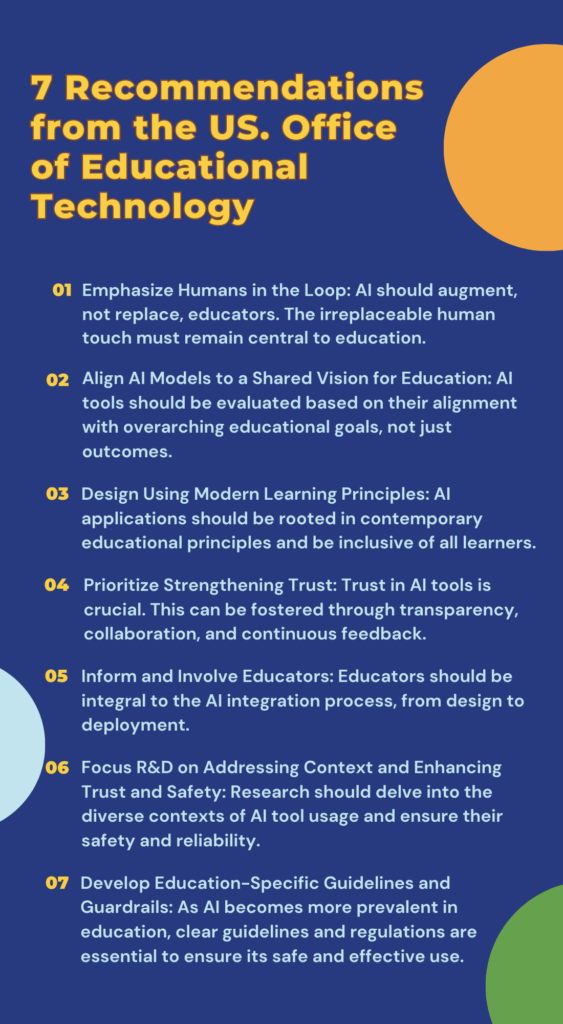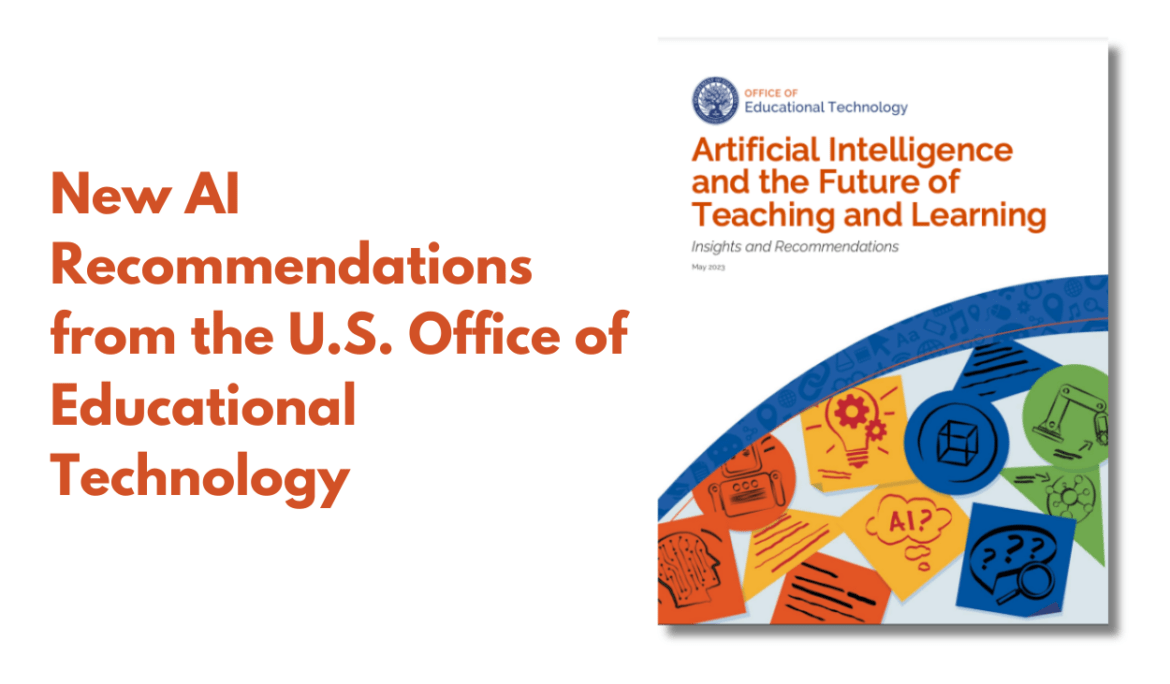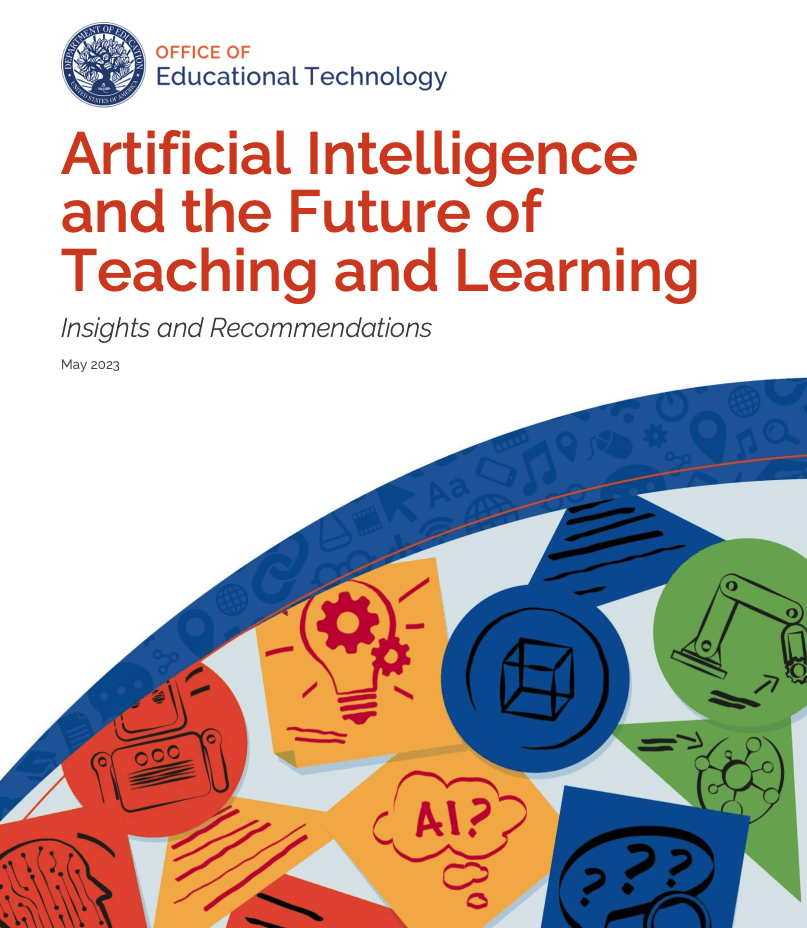In a significant move towards integrating Artificial Intelligence (AI) into the educational landscape, the United States Office of Educational Technology has released a set of comprehensive recommendations for educators.
The Benefits and Risks of AI in Education
The integration of AI in education promises a myriad of benefits, from personalized learning experiences to real-time feedback. However, it also brings forth challenges, including concerns about data privacy, potential biases in AI algorithms, and the risk of misuse by students.
The U.S. Department of Education Office of Educational Technology’s recent policy report titled, “Artificial Intelligence and the Future of Teaching and Learning: Insights and Recommendations,” emphasizes the importance of disseminating knowledge, involving educators, and fine-tuning technology strategies and guidelines for AI integration in education.
The report characterizes AI as an evolving suite of technologies designed for data pattern recognition and action automation, and it offers guidance to educators on leveraging these technologies to further educational objectives, all while assessing and mitigating associated risks.
U.S. Office of Educational Technology’s Recommendations:
Emphasize Humans in the Loop: AI should augment, not replace, educators. The irreplaceable human touch must remain central to education.
Align AI Models to a Shared Vision for Education: AI tools should be evaluated based on their alignment with overarching educational goals, not just outcomes.
Design Using Modern Learning Principles: AI applications should be rooted in contemporary educational principles and be inclusive of all learners.
Prioritize Strengthening Trust: Trust in AI tools is crucial. This can be fostered through transparency, collaboration, and continuous feedback.
Inform and Involve Educators: Educators should be integral to the AI integration process, from design to deployment.
Focus R&D on Addressing Context and Enhancing Trust and Safety: Research should delve into the diverse contexts of AI tool usage and ensure their safety and reliability.
Develop Education-Specific Guidelines and Guardrails: As AI becomes more prevalent in education, clear guidelines and regulations are essential to ensure its safe and effective use.

For more information on these recommendations and their implications, visit the U.S. Office of Educational Technology’s official report or contact the Texas Computer Education Association Advocacy team. Additionally, TCEA’s System Administrator and Technical Support Conference (Nov. 2-3), Conference for Educational Coaches (Oct. 12-13), and our annual TCEA Convention & Exposition (Feb. 3-7) will all offer some fantastic opportunities for learning about AI in education


